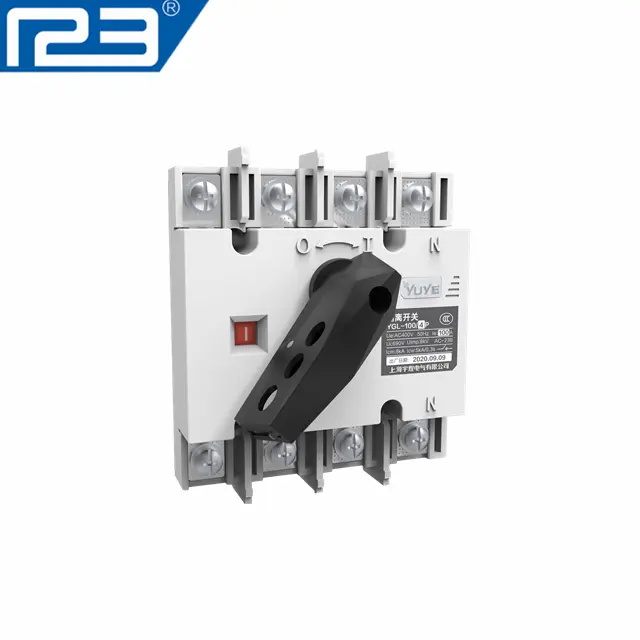Introducing the isolating switch: Isolation switch is one of the most widely used electrical appliances in high-voltage switching appliances. As the name suggests, it is supposed to play an isolation role in the circuit. Its own working principle and structure are relatively simple, but due to the large demand and high requirements for work stability, it has a great impact on the design, creation and safe operation of substations and power plants. The main feature of the tool gate is that it has no arc extinguishing ability, and can only be divided and closed under the premise of no load current. Isolation switch (commonly known as "knife switch"), generally refers to high-voltage isolation switch, that is, the isolation switch with a rated current of more than 1kV is generally called an isolation switch, and is one of the most widely used electrical appliances in high-voltage switch appliances. Its working principle and structure are relatively simple, but due to the large demand and high requirements for work stability, it has a great impact on the design, creation and safe operation of substations and power plants. The main feature of the isolation switch is that it has no arc extinguishing ability, and can only separate and close the circuit under the premise of no load current. Isolation switches are used to change circuit connections or isolate routes or equipment from power sources. It has no interruption capability and can only be disconnected from the route with other equipment before operation. Typically contains an interlock to prevent misoperation of the switch under load, and sometimes must be sold to avoid opening the switch under the action of a major faulty magnet. The working principle of the isolation switch: Generally, a set of isolating switches are installed on the front and rear sides of the circuit breaker, the purpose is to isolate the circuit breaker from the power supply, resulting in an obvious disconnection point; since the original circuit breaker selection refers to the oil circuit breaker, the oil circuit breaker must be maintained frequently. There is an obvious disconnection point, which is conducive to maintenance; in general, the outlet cabinet is powered from the upper busbar according to the switch cabinet, and the circuit breaker must be isolated from the power source, but sometimes there may be calls behind the circuit breaker, such as other loops, capacitors, etc. equipment, so a set of isolating switches is also required behind the circuit breaker. The key of the isolation switch is to reliably protect the parts that must be powered off and the energized parts of the high-voltage power distribution equipment to ensure the safety of maintenance work. The contacts of the isolating switch are all exposed to the air, and the disconnection point is obvious. The isolating switch has no arc extinguishing device and cannot be used to interrupt load current or short-circuit current. Otherwise, under the action of high voltage, the disconnection point will produce obvious electrical isolation, which is difficult to be extinguished independently, and may even cause arcing (relative or interphase short circuit) and burn the equipment, endangering life safety. This is the so-called "load-pull disconnector" major accident. Isolators can also be used for switching operations in some circuits to change the way the system operates. The difference between isolating switch and circuit breaker: Circuit breakers High voltage circuit breakers and low voltage circuit breakers are an electrical protection device with a very type of arc extinguishing device. The full name of the air switch is a gas low-voltage circuit breaker, which is mainly used in low-voltage circuits. Because it extinguishes the arc based on gas as a substance, it is called a gas low-voltage circuit breaker, or air switch for short, and our building power distribution at home is basically an air switch. Isolation switch is a high-voltage switching electrical appliance, mainly used in high-voltage circuits. This is a switchgear without arc extinguishing equipment. The key is used to disconnect the circuit without load current and isolate the power supply to ensure the safe maintenance of other electrical equipment. When turned off, it can be reliable according to normal load current and short-circuit fault current. Since there is no special arc extinguishing equipment, the load current and short-circuit capacity cannot be disconnected. Therefore, the isolation switch can only be operated when the circuit breaker is disconnected, and the load operation is prohibited to avoid serious equipment and safety accidents. Only voltage transformers, arresters and full-load transformers whose excitation current does not exceed 2A, and the current does not exceed 5A, use isolation switches to directly operate no-load lines. Circuit breakers and disconnect switches should be used for most power, with circuit breakers tossing off the load (fault) current, with disconnect switches creating a distinct point of disconnection.








